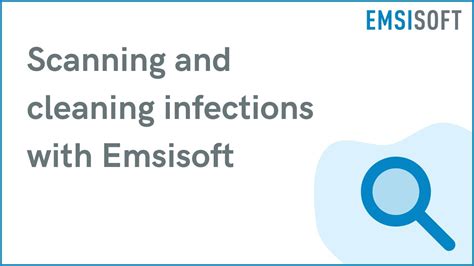Sql verify
Author: c | 2025-04-24

TSQL Query to verify SQL Server/Windows Authentication scheme used by SQL Server Connection. Execute the below TSQL Query to verify authentication used by SQL SQL Query to verify website link. 0. SQL and Regex

Verify SQL Backups With SQL Powershell - SQLServerCentral
Skip to main content This browser is no longer supported. Upgrade to Microsoft Edge to take advantage of the latest features, security updates, and technical support. Configure reporting in Configuration Manager Article10/04/2022 In this article -->Applies to: Configuration Manager (current branch)Before you can create, modify, and run reports in the Configuration Manager console, there are several configuration tasks to complete. Use this article to help you configure reporting in your Configuration Manager hierarchy.Before you install and configure SQL Server Reporting Services in your hierarchy, review the following Configuration Manager reporting articles:Introduction to reportingPlan for reportingSQL Server Reporting ServicesSQL Server Reporting Services is a server-based reporting platform that provides comprehensive reporting functionality for different kinds of data sources. The reporting services point in Configuration Manager communicates with SQL Server Reporting Services to:Copy Configuration Manager reports to a specified report folderConfigure Reporting Services settingsConfigure Reporting Services security settingsWhen you run a report, the Reporting Services component connects to the Configuration Manager site database to retrieve data.Before you can install the reporting services point in a Configuration Manager site, install and configure SQL Server Reporting Services on the target site system. For more information, see Install SQL Server Reporting Services.Verify SQL Server Reporting Services installationUse the following procedure to verify that SQL Server Reporting Services is installed and running correctly.Go to the Start menu on the site system, and open Report Server Configuration Manager. You may find it in the Configuration Tools section of the Microsoft SQL Server group.In the Reporting Services Configuration Connection window, enter the name of the server that hosts SQL Server Reporting Services. Select the instance of SQL Server on which you installed SQL Server Reporting Services. Then select Connect to open Reporting Services Configuration Manager.On the Report Server Status page, verify that Report Service Status is Started. If it's not in this state, select Start.On the Web Service URL page, select the URL in Report Service Web Service URLs. This action tests the connection to the report folder. The browser might prompt you for credentials. Verify that the webpage opens successfully.On the Database page, verify that the Report. TSQL Query to verify SQL Server/Windows Authentication scheme used by SQL Server Connection. Execute the below TSQL Query to verify authentication used by SQL SQL Query to verify website link. 0. SQL and Regex Download your 14-day free trial of Redgate SQL Backup Pro, a tool that takes compressed, encrypted, and verified SQL Server backups. Compress, verify, and encrypt SQL Server backups. Fully verified SQL Server backups you can rely on. Download free trial. Download files ; Verified details These details have been verified by PyPI Maintainers adgsenpai output of drivers ['SQL Server', 'ODBC Driver 17 for SQL Server', 'SQL Server Native Write a SQL query to verify the integrity of a transaction log backup file of a database named InventoryDB . Write a SQL query to verify the integrity of a compressed ManagementUnderlying virtual machine is invalidIf you see the following error message:SQL management operations are disabled because the state of underlying virtual machine is invalidConsider the following:The SQL VM might be stopped, deallocated, in a failed state, or not found. Validate the underlying virtual machine is running.Your SQL IaaS Agent extension might be in a failed state. Repair the extension.Delete the extension from your SQL Server VM and then register the SQL VM with the extension again if you did any of the following:Migrated your VM from one subscription to the other.Changed the locale or collation of SQL Server.Changed the version of your SQL Server instance.Changed the edition of your SQL Server instance.Provisioning failedRepair the extension if the SQL IaaS Agent extension status shows as Provisioning failed in the Azure portal.The SQL IaaS Agent extension can fail to install if TCP/IP is disabled in SQL Server Configuration Manager, or at the virtual machine level.SQL VM resource unavailable in portalIf the SQL IaaS Agent extension is installed, and the VM is online, but the SQL VM resource is unavailable in the Azure portal, verify that your SQL Server and SQL Browser service are started within the VM. If this doesn't resolve the issue, repair the extension.Features are grayed outIf you navigate to your SQL VM resource in the Azure portal, and there are features that are grayed out, verify that the SQL VM is running, and that you have the latest version of the SQL IaaS Agent extension.Changed service accountChanging the serviceComments
Skip to main content This browser is no longer supported. Upgrade to Microsoft Edge to take advantage of the latest features, security updates, and technical support. Configure reporting in Configuration Manager Article10/04/2022 In this article -->Applies to: Configuration Manager (current branch)Before you can create, modify, and run reports in the Configuration Manager console, there are several configuration tasks to complete. Use this article to help you configure reporting in your Configuration Manager hierarchy.Before you install and configure SQL Server Reporting Services in your hierarchy, review the following Configuration Manager reporting articles:Introduction to reportingPlan for reportingSQL Server Reporting ServicesSQL Server Reporting Services is a server-based reporting platform that provides comprehensive reporting functionality for different kinds of data sources. The reporting services point in Configuration Manager communicates with SQL Server Reporting Services to:Copy Configuration Manager reports to a specified report folderConfigure Reporting Services settingsConfigure Reporting Services security settingsWhen you run a report, the Reporting Services component connects to the Configuration Manager site database to retrieve data.Before you can install the reporting services point in a Configuration Manager site, install and configure SQL Server Reporting Services on the target site system. For more information, see Install SQL Server Reporting Services.Verify SQL Server Reporting Services installationUse the following procedure to verify that SQL Server Reporting Services is installed and running correctly.Go to the Start menu on the site system, and open Report Server Configuration Manager. You may find it in the Configuration Tools section of the Microsoft SQL Server group.In the Reporting Services Configuration Connection window, enter the name of the server that hosts SQL Server Reporting Services. Select the instance of SQL Server on which you installed SQL Server Reporting Services. Then select Connect to open Reporting Services Configuration Manager.On the Report Server Status page, verify that Report Service Status is Started. If it's not in this state, select Start.On the Web Service URL page, select the URL in Report Service Web Service URLs. This action tests the connection to the report folder. The browser might prompt you for credentials. Verify that the webpage opens successfully.On the Database page, verify that the Report
2025-03-31ManagementUnderlying virtual machine is invalidIf you see the following error message:SQL management operations are disabled because the state of underlying virtual machine is invalidConsider the following:The SQL VM might be stopped, deallocated, in a failed state, or not found. Validate the underlying virtual machine is running.Your SQL IaaS Agent extension might be in a failed state. Repair the extension.Delete the extension from your SQL Server VM and then register the SQL VM with the extension again if you did any of the following:Migrated your VM from one subscription to the other.Changed the locale or collation of SQL Server.Changed the version of your SQL Server instance.Changed the edition of your SQL Server instance.Provisioning failedRepair the extension if the SQL IaaS Agent extension status shows as Provisioning failed in the Azure portal.The SQL IaaS Agent extension can fail to install if TCP/IP is disabled in SQL Server Configuration Manager, or at the virtual machine level.SQL VM resource unavailable in portalIf the SQL IaaS Agent extension is installed, and the VM is online, but the SQL VM resource is unavailable in the Azure portal, verify that your SQL Server and SQL Browser service are started within the VM. If this doesn't resolve the issue, repair the extension.Features are grayed outIf you navigate to your SQL VM resource in the Azure portal, and there are features that are grayed out, verify that the SQL VM is running, and that you have the latest version of the SQL IaaS Agent extension.Changed service accountChanging the service
2025-03-31Share via When I try to connect from a remote computer, I get the following error: 'The connection to the host [ip address], named instance sqlexpress failed. Error: "java.net.SocketTimeoutException: Receive timed out". Verify the server and instance names and check that no firewall is blocking UDP traffic to port 1434. For SQL Server 2005 or later, verify that the SQL Server Browser Service is running on the host.' I followed all 3 of those steps, creating inbound rules (opening the firewall) for UDP traffic to port 1434 and tcp traffic at port 1433, and running the sql server browser service. The same error came up still. I checked the default tcp port for my sql, and it came up as 1433. I use windows and version 2018 of Microsoft SQL. The jdbc string I use is: jdbc:sqlserver://[ip address]\SQLEXPRESS;databaseName=[databaseName] I couldn't see any more clues in the error I was getting for how to fix things. Clues on what else I could be doing wrong?
2025-04-11Bin/Debug/projectname.dacpac).Option 1 isn't available for the command line. Use option 2 instead.Option 2: Create a new empty SQL project and import objects from an existing databaseAlternatively, the project creation and object import steps can be done separately.Step 1: Create a new empty SQL projectWe start our project by creating a new SQL database project before importing our objects to it.Select File, New, then Project.In the New Project dialog box, use the term SQL Server in the search box. The top result should be SQL Server Database Project.Select Next to proceed to the next step. Provide a project name, which doesn't need to match a database name. Verify and modify the project location as needed.Select Create to create the project. The empty project is opened and visible in the Solution Explorer for editing.Select File, New, then Project.In the New Project dialog box, use the term SQL Server in the search box. The top result should be SQL Server Database Project, SDK-style (preview).Select Next to proceed to the next step. Provide a project name, which doesn't need to match a database name. Verify and modify the project location as needed.Select Create to create the project. The empty project is opened and visible in the Solution Explorer for editing.In the Database Projects view of VS Code or Azure Data Studio, select the New Project button.The first prompt determines which project template to use, primarily based on whether the target platform is SQL Server or Azure SQL. If prompted to select a specific version
2025-04-02